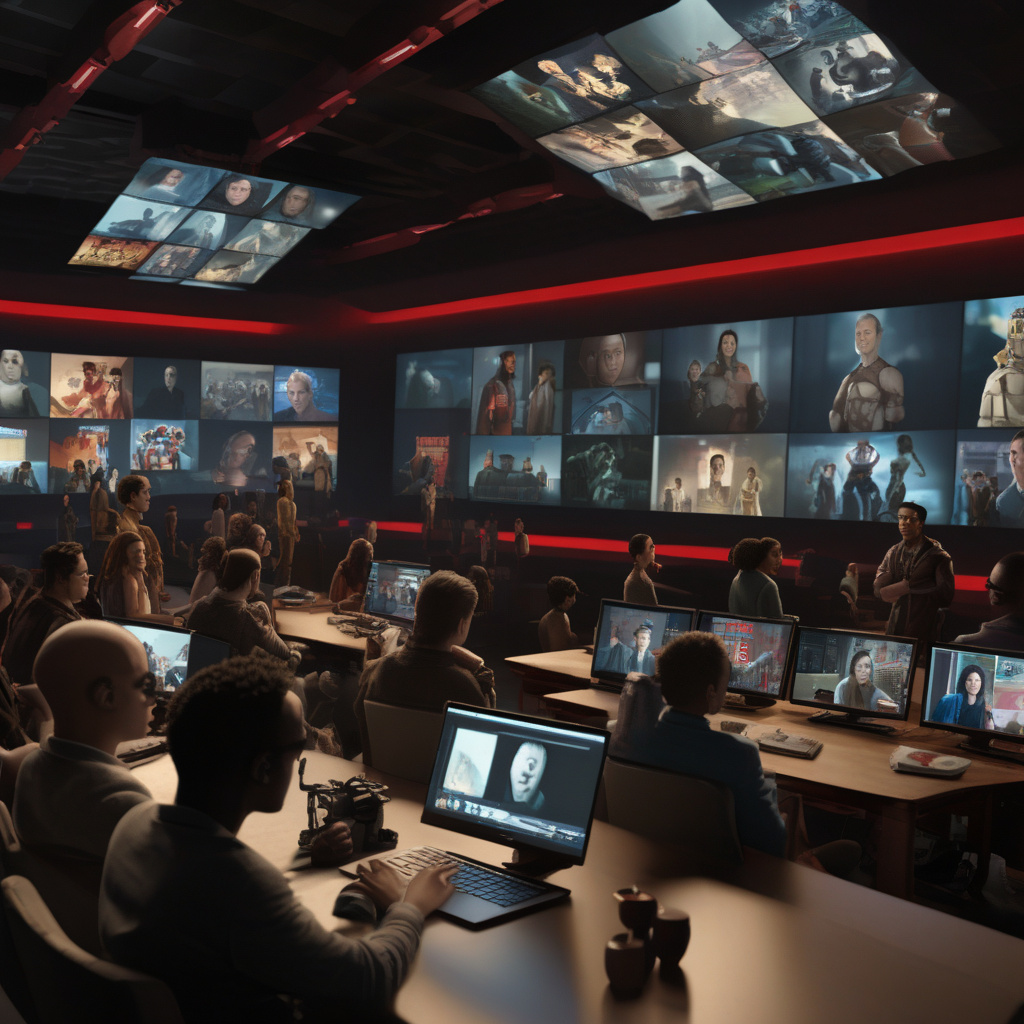Limiting the Use of Generative AI in Netflix Productions: New Rules in Place
Netflix, the streaming giant known for its innovative approach to content creation, has recently implemented new restrictions on the use of Generative Artificial Intelligence (AI) in its productions. The company has taken a firm stance, stating that Generative AI cannot be used to replicate copyrighted work or to replace union labor on Netflix shows.
This decision marks a significant shift in the entertainment industry, where AI technologies have been increasingly utilized to streamline production processes and create captivating content. Generative AI, in particular, has been praised for its ability to generate realistic images, videos, and even music, making it an attractive tool for content creators looking to enhance their projects.
However, concerns have been raised about the ethical implications of using AI in creative industries. One of the primary issues is the potential for AI to infringe upon existing copyrights by replicating protected works without permission. By prohibiting Generative AI from copying copyrighted material, Netflix is taking a proactive approach to safeguarding intellectual property rights and respecting the creative efforts of artists and creators.
Additionally, Netflix’s decision to limit the use of AI in its productions is aimed at protecting union labor in the entertainment sector. As AI technologies become more advanced, there is a growing fear that they could eventually replace human workers, leading to job losses and economic instability. By setting boundaries on the use of Generative AI, Netflix is signaling its commitment to upholding labor standards and supporting the livelihoods of industry professionals.
While some may view these restrictions as limiting the potential of AI in entertainment, they also highlight the importance of ethical considerations in technological advancements. By establishing clear guidelines for the use of AI, Netflix is fostering a responsible approach to innovation that prioritizes creativity, originality, and human labor.
In practice, these new rules mean that Netflix producers and creators will need to find a balance between leveraging AI technologies for efficiency and creativity while respecting legal and ethical boundaries. For example, AI can still be used in tasks such as data analysis, personalized recommendations, and post-production editing without running afoul of the restrictions.
Ultimately, Netflix’s decision to limit the use of Generative AI in its productions sets a precedent for the industry as a whole. By acknowledging the potential risks and implications of AI technologies, Netflix is taking a proactive step towards ensuring that innovation in entertainment is both sustainable and ethical.
As technology continues to evolve, it is essential for companies like Netflix to lead by example and prioritize responsible practices that benefit both creators and audiences. By striking a balance between innovation and regulation, Netflix is shaping the future of entertainment in a way that is inclusive, ethical, and sustainable.
In conclusion, the new rules imposed by Netflix regarding the use of Generative AI in productions signal a pivotal moment in the intersection of technology and creativity. By recognizing the limitations of AI and the importance of upholding copyright and labor standards, Netflix is paving the way for a more conscientious approach to content creation in the digital age.
Netflix, AI, Productions, Copyrights, Labor Standards
